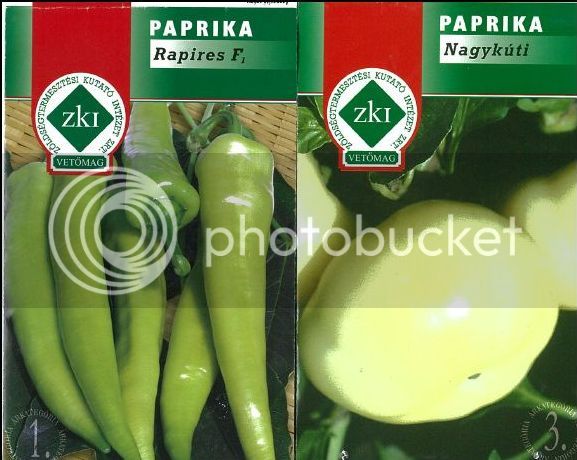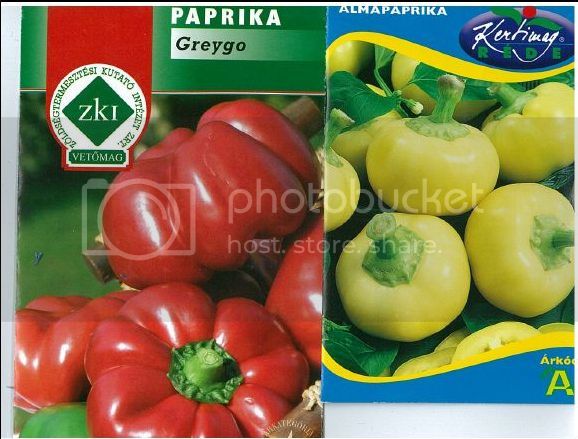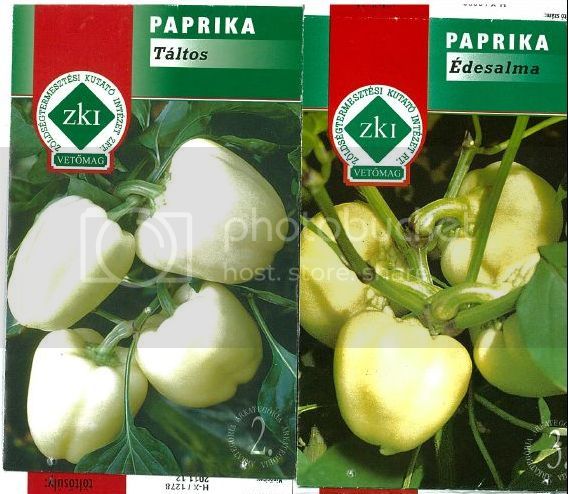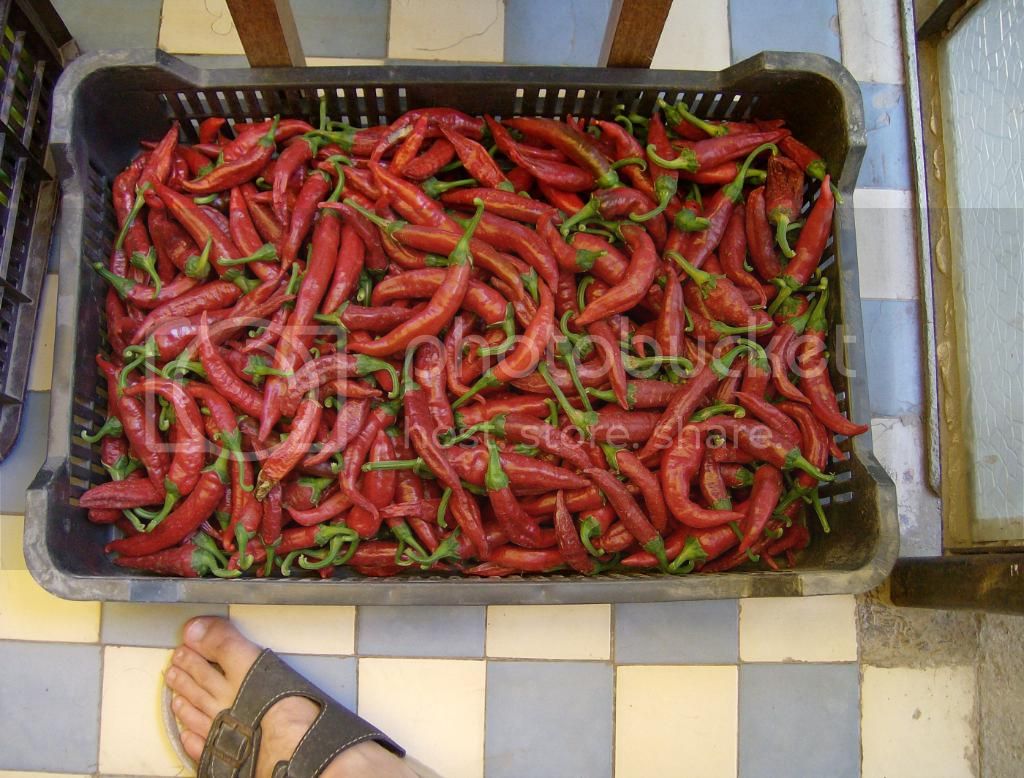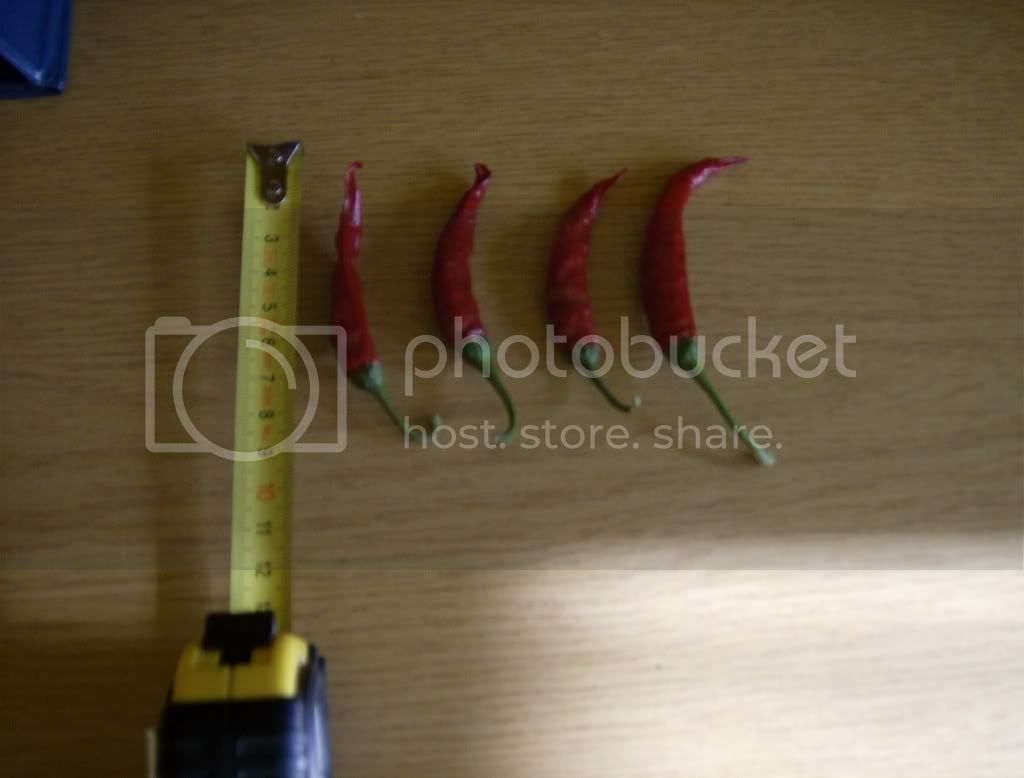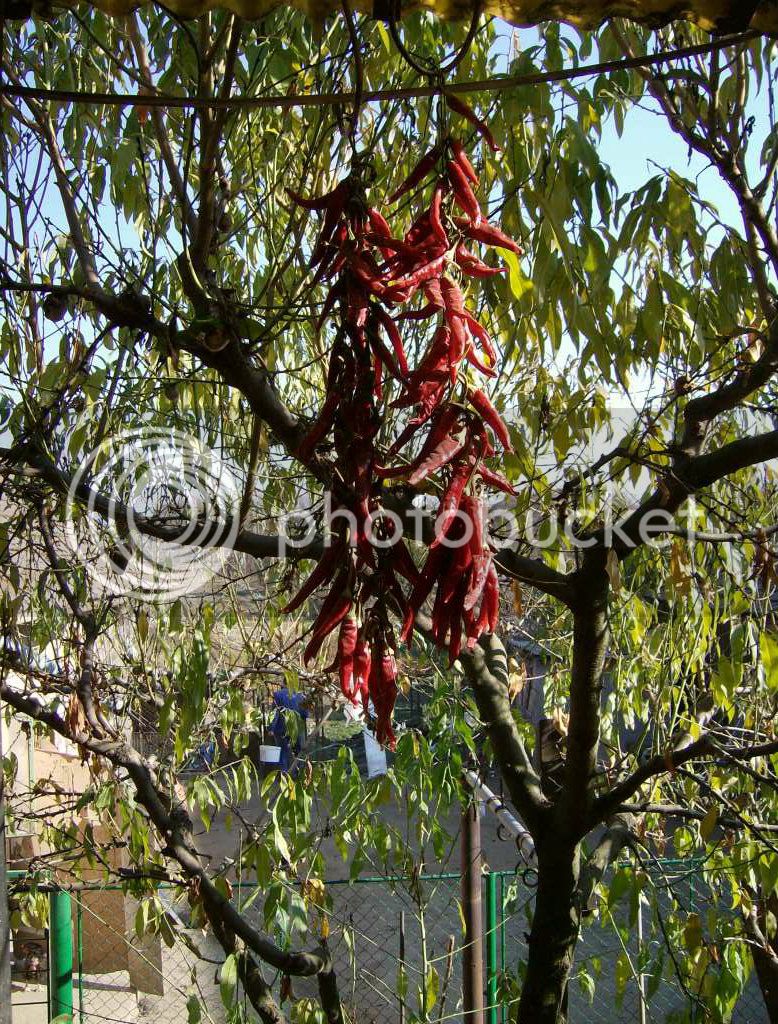I don't think so, but I'll have to ask Baláz. Where he could, he added variety names, but some he got from a friend of his who had grown them this season, and some he got from his fiancee's Grandfather before he passed away earlier this year. He sent two varieties of almapaprika (the apple shaped peppers, one sweet and the other mildly hot), what we call "cheese peppers" here and the Hungarians call "tomato peppers" since they look like a beefsteak tomato, and a few others. All are early varieties, since the Hungarian pepper growing region is the equivalent of zone 4. Most are round, but some are not. The heat levels and color when ripe vary widely between them. This link may help...
http://europeantrave...ope/paprika.php
Hi Rick,
I am glad to see that the Hungarian and the U.S. postal service finally did a great job!

The Hungarian types are typically short season ones, meaning, that you have to sow the seeds in March, and you will get ripe pods by Aug-Sep.
Let me share some pictures/info about the peppers I sent to you. I have scanned the package of the shop-bought ones to show you how they look like, and let me translate (or at least try to

the info I found on their back.
Rapires F1: well known hybrid from the markets of Hungary, we just simply call it 'Pointed Hot'.
Info on the back: 'Continious growing variety. Fast growing, it is not resistant to lack of light. The pods are sagging, weight to 40-50 grams. Resistant to the latest versions of the Tobacco Mosaic Virus. Can be grown in every season.
Nagykúti: Heavy producer Almapaprika. Continious growing. The pods have thick flesh, and are bigger and hotter than any known Almapaprika type. The pods are ripening from white to red. (side note: they are consumed when they are still white-yellow). The pods are suitable for making pickle.
Greygo: Continious growing, it has a strong growing habit, 40-45 cm high tomato pepper. Ripens from dark green to dark red, sagging, sweet, weight is 130-140 grams. Resistant to mold. Resistant to most of the Tobacco Mosaic Virus types.
Almapaprika: Continious growing, mild variety, with thick flesh, average weight is 40-45 grams. Good eaten fresh or pickled.
Táltos: Continious growing, for stuffing, white pepper. Pods are 10-12 cm long, 6-8 cm wide, thick walled, white-yellow, round, sagging, non-pungent, 110-120 grams. Resistant to stress, fusarium, and cucumber mosaic virus.
Édesalma: Continious growing, medium sized plant, 35-40 cm high, fast growing type. Good for making pickle, non-pungent. Pods are apple-shaped yellow-white, sweet, 55-60 grams.
Hungarian Sweet paprika: got the seeds from my fiancee's grandfather, excellent grower, sweet, and the best type to make traditional Hungarian paprika powder. We had 40 plants (30-35 cm high ones), which were not really watered during the season and despite of that, approx 1-1.5 kg of paprika powder was made from the dried pods.
Hungarian Red Hot: my father grows them since years, Thai-like peppers, quite hot, and heavy producer. It is great in pickle, especially, when harvested semi-ripen stage. Also called 'Macskapöcse' in Hungary. ('cat's cock', sorry I had to translate it

)
Hungarian Yellow Hot: yellow variety of the same pepper. Also called 'Macskasárga', which might be familiar for some of the THP members.
Purple Stuffing pepper: I am trying to find some picture about it
Cheers,
Balázs




